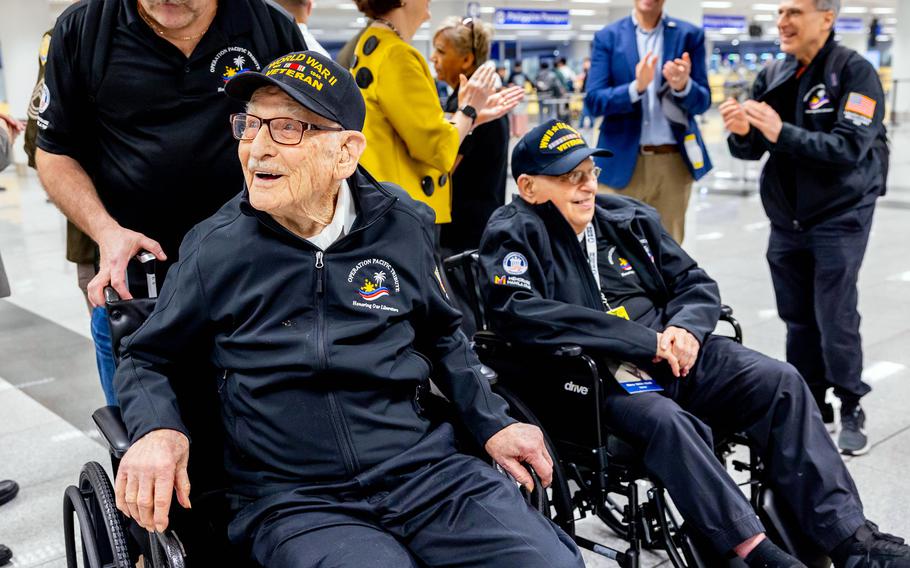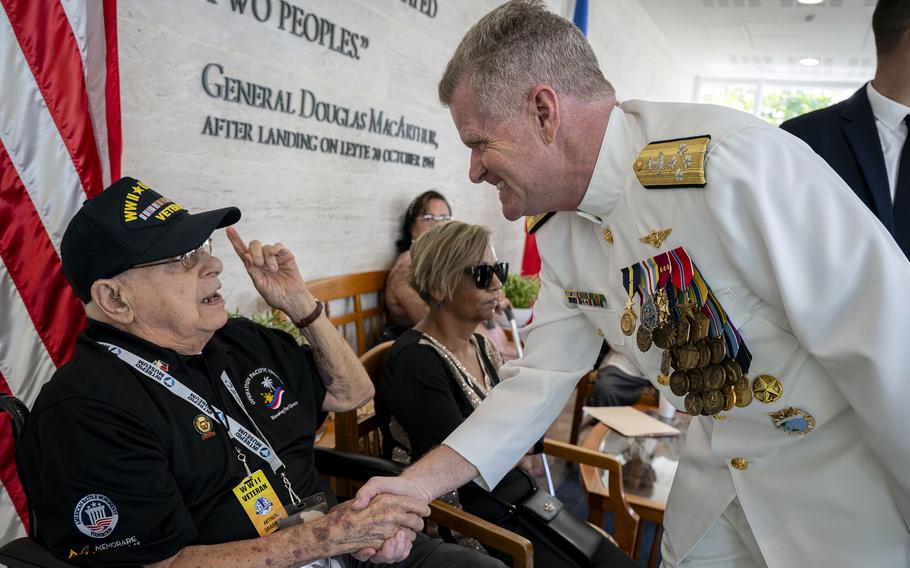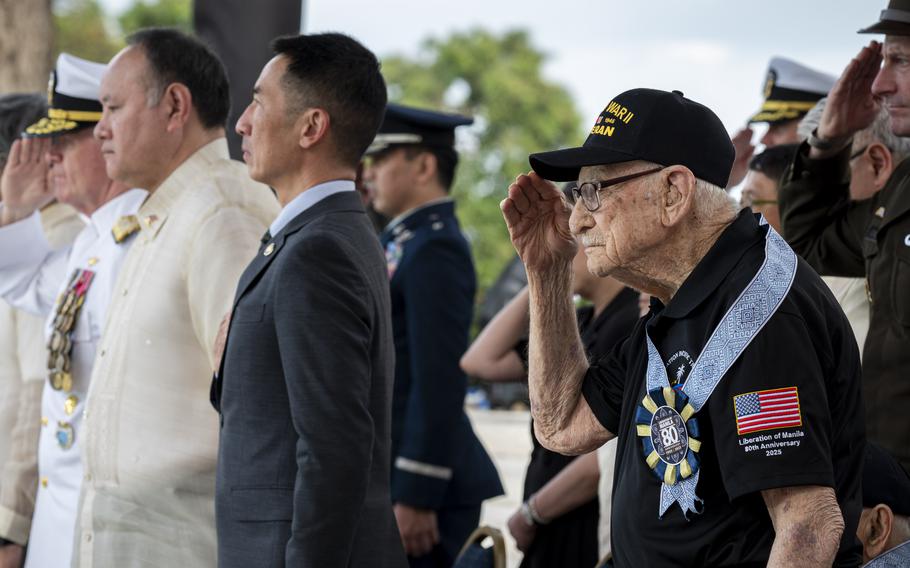
U.S. Army veteran John Hodges, 101, of Staunton, Va., left, and U.S. Navy veteran Arthur Grabiner, 99, of New York City recently returned to the Philippines to commemorate the 80th anniversary of the Battle of Manila. (U.S Embassy in the Philippines)
A pair of U.S. veterans are headed home after one of the last visits to the Philippines by Americans who fought there during World War II.
Navy veteran Arthur Grabiner, 99, of New York City, and Army veteran John Hodges, 101, of Staunton, Va., returned to the islands Feb. 18 for a week of events commemorating the 80th anniversary of the Battle of Manila. They departed Monday.
Both veterans joined an anniversary ceremony at Manila American Cemetery on Saturday alongside U.S. Indo-Pacific Command chief Adm. Samuel Paparo, U.S. Army Pacific deputy commander Lt. Gen. Joel Vowell and Ambassador to the Philippines MaryKay Carlson.
About 66,000 U.S. veterans of WWII are still living, according to the National WWII Museum in New Orleans. In April, the Philippine Veteran Affairs Office counted 966 surviving Filipino WWII veterans, who are also considered U.S. veterans, according to a report in the state-run Philippine News Agency at the time.

Adm. Samuel Paparo, the head of U.S. Indo-Pacific Command, greets Navy veteran Arthur Grabiner, 99, of New York City, at Manila American Cemetery in the Philippines, Feb. 22, 2025. (Shannon Smith/U.S. Navy)
The fight to free Manila, the Philippine capital, raged from Feb. 3 to March 3, 1945, as Allied forces led by Gen. Douglas MacArthur wrested the city from Japanese occupiers.
The recapture of Manila fulfilled the “I shall return” promise MacArthur made when he retreated to Australia in spring 1942.
Grabiner served as a yeoman on the USS Laurens, an attack transport ship, during the battle for the Philippines. He recalled a close call with a Japanese kamikaze plane, which struck a nearby vessel, the USS Zeilin, during a convoy in the Leyte Gulf on Jan. 13, 1945, according to an email sent Sunday by his son, Douglas Grabiner.
“Seven crew members on the Zeilin, our sister ship in our task unit, were killed, three crew members were declared missing (presumably dead) and 30 crew members were wounded,” Arthur Grabiner recalled.
In January 1945, Hodges joined the fighting in the Philippines as a member of the 950th Anti-Aircraft Artillery Automatic Weapons Battalion.
The unit helped seize airfields and naval facilities at Subic Bay, near Manila, and engaged in heavy combat along the Bataan Peninsula.

U.S. Army veteran John Hodges, 101, of Staunton, Va., salutes on the 80th anniversary of the Liberation of Manila at Manila American Cemetery in the Philippines, Feb. 22, 2025. (Shannon Smith/U.S. Navy)
On his return to Manila, Hodges noted how much the city had changed from wartime ruins to a growing metropolis, according to former Air Force fighter pilot Pierre Oury, who helped organize the veterans’ return, dubbed Operation Pacific Tribute.
Oury and former Navy pilot Scott Seeberger raised money for the trip after being involved in a similar project last year to bring veterans to France to commemorate the D-Day landings, he said by phone Friday from Manila.
“We knew it was probably going to be the last time veterans went to D-Day and we knew this was going to be the last time in the Pacific,” he said. “That’s why this was important.”